Island Classic 2016
Phil Hall’s perspective, with a special focus on Team USA and Historic Motorcycle Racing in America
The Island Classic is one of my “must see” meetings each year. There is so much to love about it, despite the 2000km round trip that is part and parcel of the process. There is the accessibility, where normal spectators can get into the pits and socialise with the racers and crew; there is the prospect of 56 races spread over the two days; 500+ bikes and 350+ riders means that anyone who can’t find something they like really isn’t trying hard enough; “celebrity spotting” is easy and knowing that you have crammed weeks of enjoyment into a weekend makes the memories even better.
There are races for every type of bike you can imagine, from pre-war “clunkers” to the classics of the 80’s and 90’s and riders of all ages and shapes and sizes (literally).
Then there is the International Challenge. The IC races are the banner events of the weekend featuring 4 races over 6 laps with 10 riders from each competing country. Points accrued in these four races add up towards determining the winning nation. This year the Big Four, Australia, UK, USA and New Zealand were joined by a team from Ireland.
For the last five years, due to a strange combination of circumstances, I have found myself attached to the American team as a sort of gopher, dogsbody and liaison person. It’s been a great experience and has led to the establishment of some wonderful friendships. Team USA covered itself with glory last year by getting on the podium in the IC for the first time and expectations were high.

Now, some explanation about the differences between our historic racing and American historic racing is necessary. In the US, historic racing is an even smaller component of the overall road racing scene than it is here. But having a population of nearly 300mil should mean that the country should be producing heaps more riders and bikes than what we do. Sadly this is not the case. Road racing itself at anything more than a club level is languishing badly due to the tyranny of distance, the ravages of AMA neglect and an almost total lack of corporate sponsorship in a country that brought you NASCAR and Supercross. The golden era of Lawson, Rainey, Roberts, Spencer and Schwantz is a distant memory for even those who participated in it.
The AMA system that blooded riders through the ranks of short track, long track, TT and road racing (witness “On Any Sunday”) back in the day has fallen into complete disuse. The #1 plate doesn’t mean anything any more. In that system, riders had to excel at all the disciplines in order to get to the top and it produced the luminaries listed above and brought about the Golden Age of GP racing where the Americans ran rampant over all comers.
That is all in the past. Wayne Rainey’s attempts to resurrect superbike racing is starting to bear fruit but there is practically nothing happening at the national level. Racing is localised and marginalised.
As a minor component of this mess, historic racing is almost invisible in the corporate and fans’ consciousness’s. Most American historic racers race under the umbrella of AHMRA (American Historic Motorcycle Racing Association) though there are many more local bodies that cater for historic racing. AHMRA runs one big event per year at Barber where upwards of 50,000 spectators attend to watch the races, visit the museum and take part in the carnival atmosphere. The rest of the time the AHMRA riders ride on the smaller tracks, with tiny grids, no spectators except their pit crews and nothing to show for it except a plastic trophy. “Well, that’s sort of similar to here,” you might be tempted to think, but our local PCRA, HMRAV and state-based bodies still promote vastly better patronised meetings than those in the Land of the Free. The money and the interest simply isn’t there.
So it’s a problem. But the real problem is one of a philosophical nature than a logistical/financial one. You see, the American take on Historic Racing is that of racing historic bikes as they were when they were current bikes. When the first American riders came out here to the Classic they were stunned at what they saw. 190bhp Katanas just blew them away. The staple of historic racing at the top level is still, to this day, the venerable TZ750 Yamaha two-stroke. Improved to suit modern conventions, yes, but still a TZ (sorry, Tee Zee). And, as anyone knows, a 30-year-old bike running pretty much the spec’ that it was back then, just isn’t going to cut it.
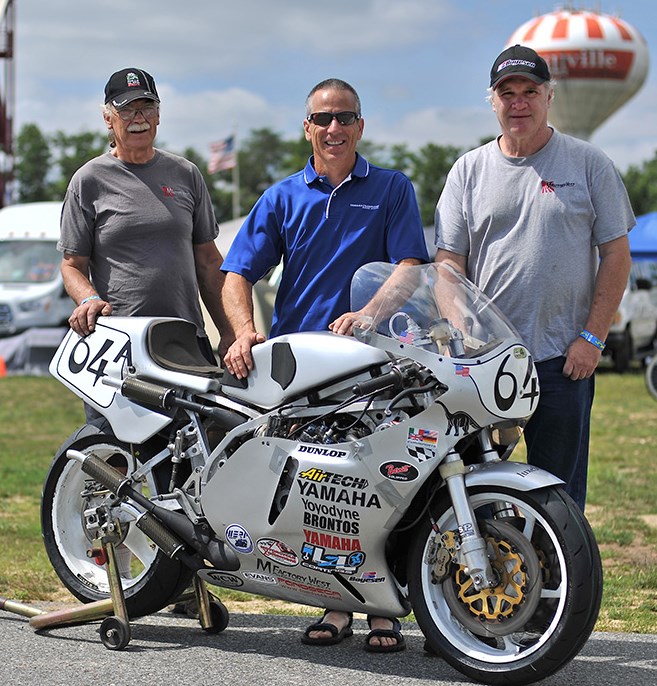
Some riders are running bigger four-stroke bikes, but the TZ is king in the USA. The Americans excel at small-bore racing and the one year that the East Coast contingent brought out a heap of 250 and 360cc four-strokes, they had a ball, but these bikes do not compete in the International Challenge.
“Well, why don’t the Americans build some bikes like the ones the Australian and UK teams run?” The question has already been answered. They COULD, but there is nowhere where they could race them except at Phillip Island. The expense and difficulties of doing so are insurmountable. So, talented engineers and mechanics continue to improve the faithful TZ’s with newer frames, better components and better metallurgy. In the end, however, it’s still bringing a knife to a gunfight when you are faced with bikes that are illegal even by local regulations but are allowed to race at PI because the organisers want a good show.
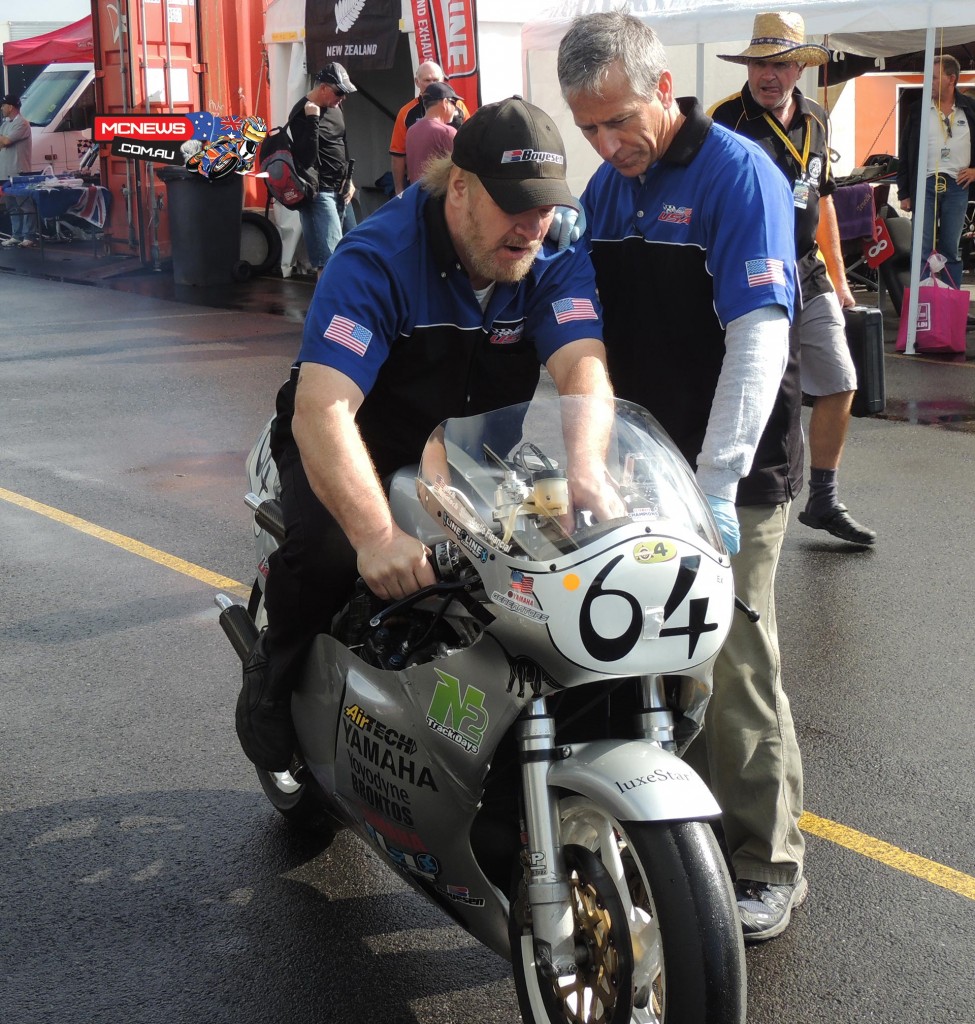
This year, Team USA placed its faith in some proven runners, Jon Munns, Joe Weir and Ralph Hudson and Eirik Nielson on Harris-framed bikes. Genial Dave Crussell (team captain) brought TWO TZ750’s for himself, and Dave Moss AND a Harris Yamaha for former AMA regular, Pat Mooney. Mike Studinski had his own TZ750 and Rusty Bigley hired journalist and part-time racer, Nick Ienatsch, to ride his very trick Spondon TZ. BUT all of these riders are, by their own admission, club racers and none of them race full time.
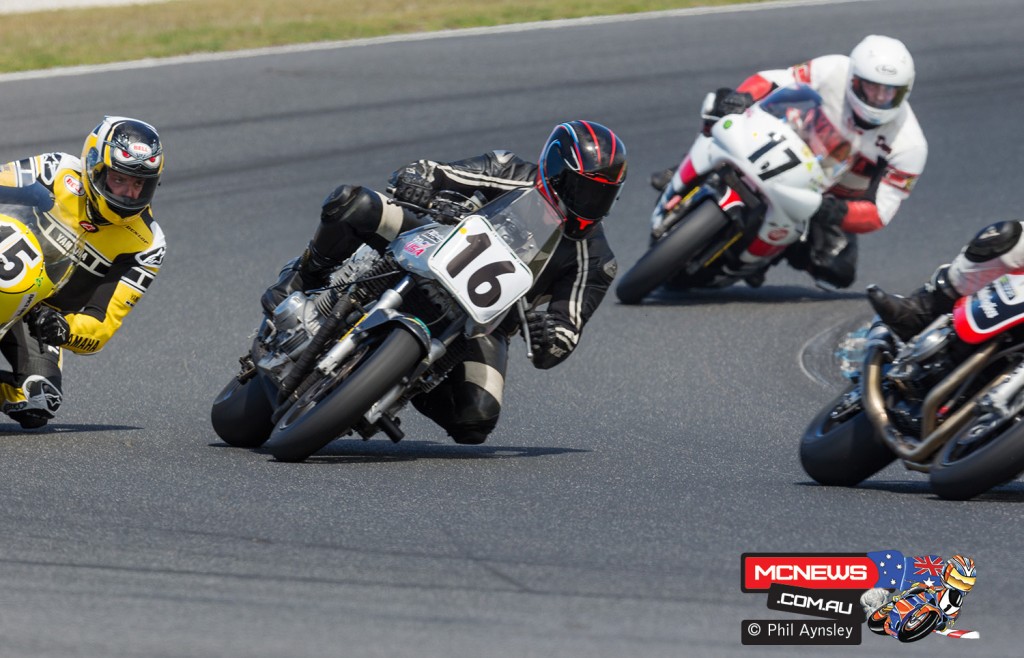
Adding Ienatsch and especially Mooney to the riding roster certainly helped. Mooney is a tough, battle-hardened veteran and Ienatsch brings a wealth of experience to the table. But it still has to work on the weekend and it just didn’t. Joe Weir’s #1 bike dropped the #1 piston in the first practice session and was out for the weekend. Fortunately, Joe knows how PI can bite and he had brought his Katana from last year as a back-up bike so he still got to ride. Rusty Bigley spent a lot of valuable time chasing down a fuel leak (finally solved but it cost them so much time). The bike was a rocket once it was on track, but, too late to make an impact.
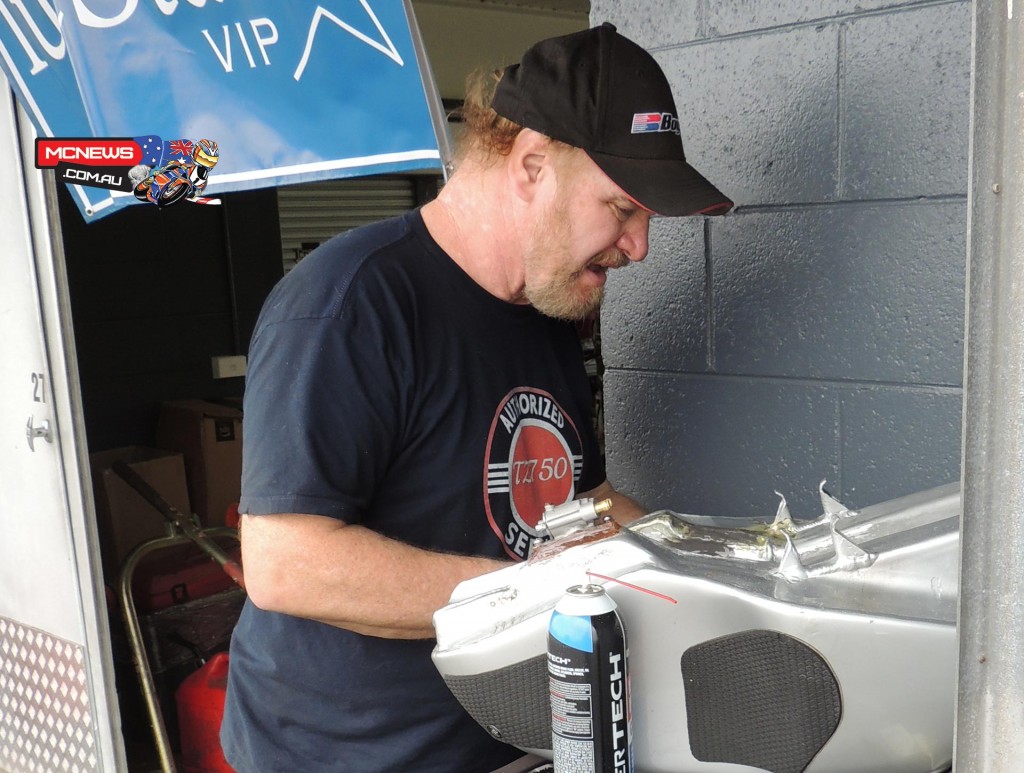
Dave Crussell had issues all weekend with the #1 TZ, even borrowing Dave Moss’s bike in one round so he could score points. In a final piece of cruelty, the bike did a clutch on the dummy grid of Race #4 and he pushed it back in.
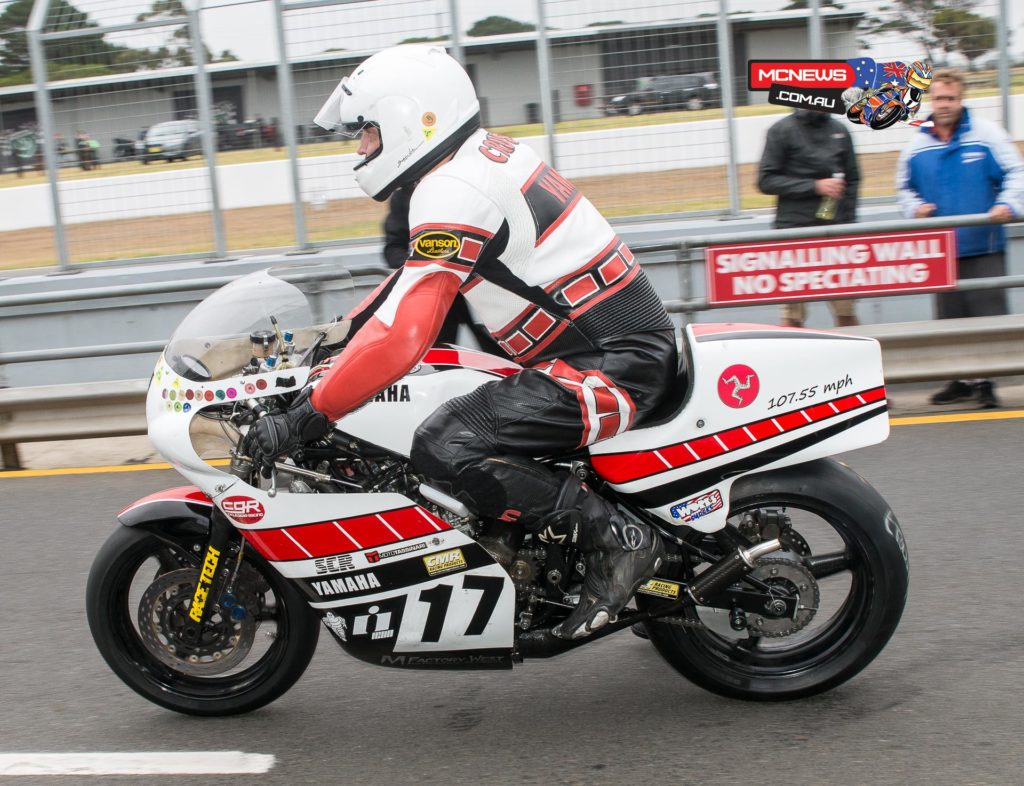
Mooney’s bike broke an oil cooler in the first practice session and, since a replacement couldn’t be found straight away he did the rest of practice and qualifying without it, with no apparent ill-effects. The bike ran quickly and faultlessly the rest of the weekend minus oil cooler.
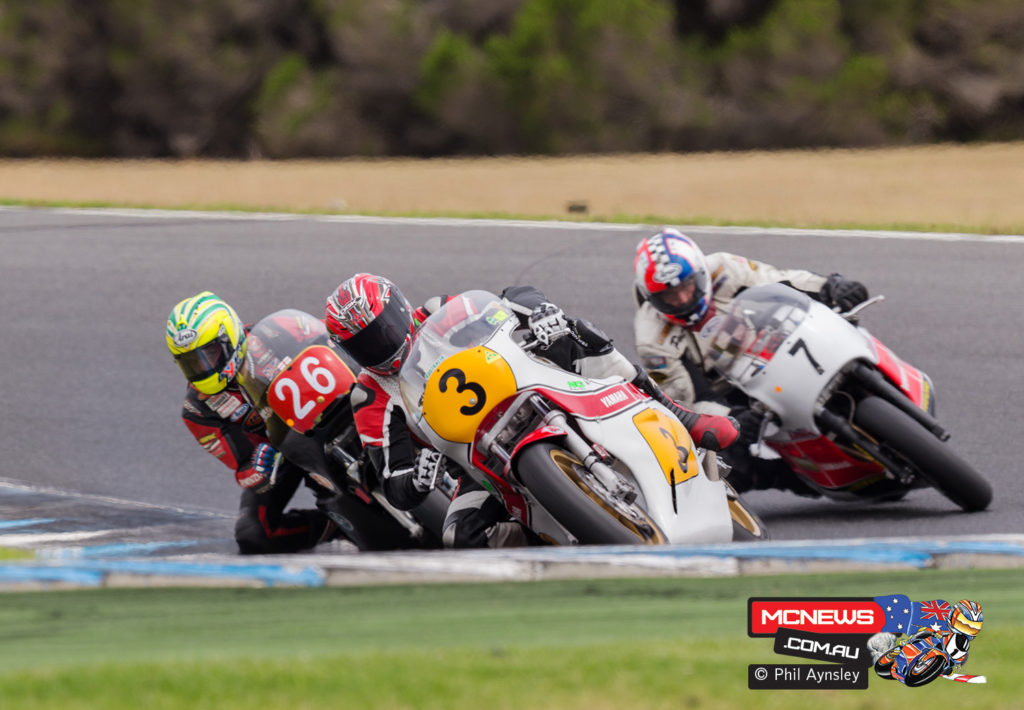
And so it went. Flying under the radar, Munns, Nielson, Weir and the rest picked up placings in ever race, much to everyone’s delight. No accidents all weekend (Jon had a small spill on his little bike but he was out again on it next race).
However, It wasn’t enough. The Americans had brought guns but the guns weren’t big enough, both in terms of machinery and the riding roster. Their highest placed individual rider was, unsurprisingly, Mooney, but he was 16th in the overall pointscore. Neilson was 18th and all the rest finished in the 20’s and 30’s on points. Much to everyone’s chagrin, Team USA not only failed to improve on their 3rd place in 2015, but slipped to 4th place in 2016, their place on the podium taken by the debutant Team Ireland a team with a rag-tag collection of bikes ridden by a hardened roster of road racers whose intimacies with Cookstown and the North West 200 would have made them tough to beat on ANY bikes.
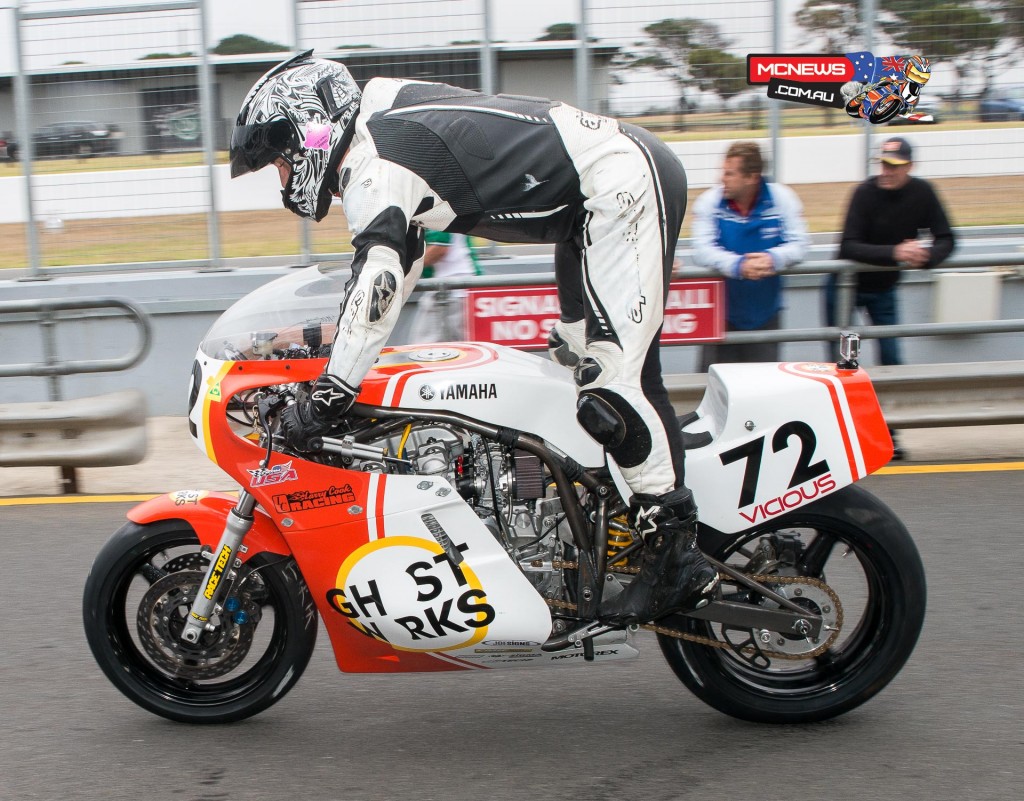
As always, the Americans did brilliantly given the difficulties. They are a happy, cohesive bunch of crazy guys and gals who love doing what they are doing and love coming to the Island. It is impossible not to like them and catching up with them is always a pleasure and a privilege. They WANT to win and, if effort and enthusiasm counts for anything, they SHOULD win.
So what is the answer? Well, it would help a LOT if Team USA could hire some not-long-retired GP racers like Team GB has. Names like Schwantz (who would have come except that he wanted a 5 figure fee to appear), Russell, Edwards and co have all been mentioned and the interest IS there, but it has to be worth their while and it’s not. The boys have another 12 months and, hopefully, they will raise the game even more. In the mean time, a line from a Jimmy Buffett songs seems appropriate, “Trying to find what is ailing them, living in the land of the free..”
Historic racing IS ailing and, until the health of the sport improves, the health of Team USA will be ailing too.
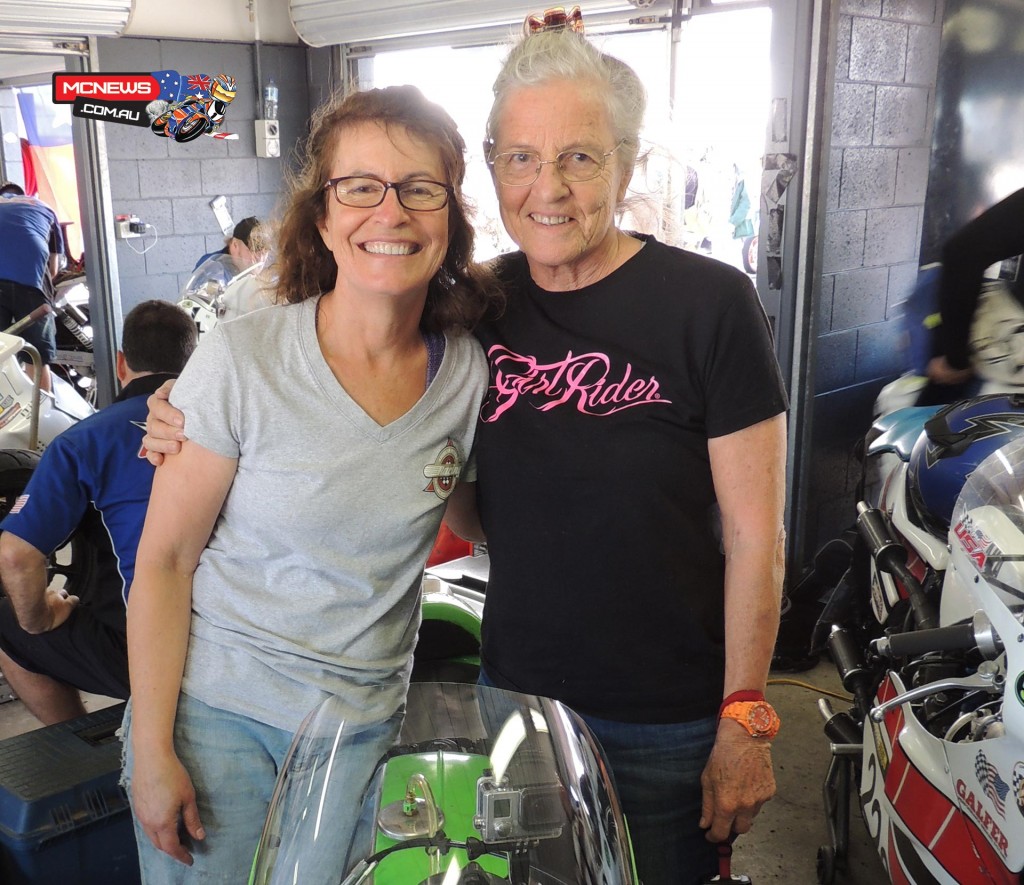
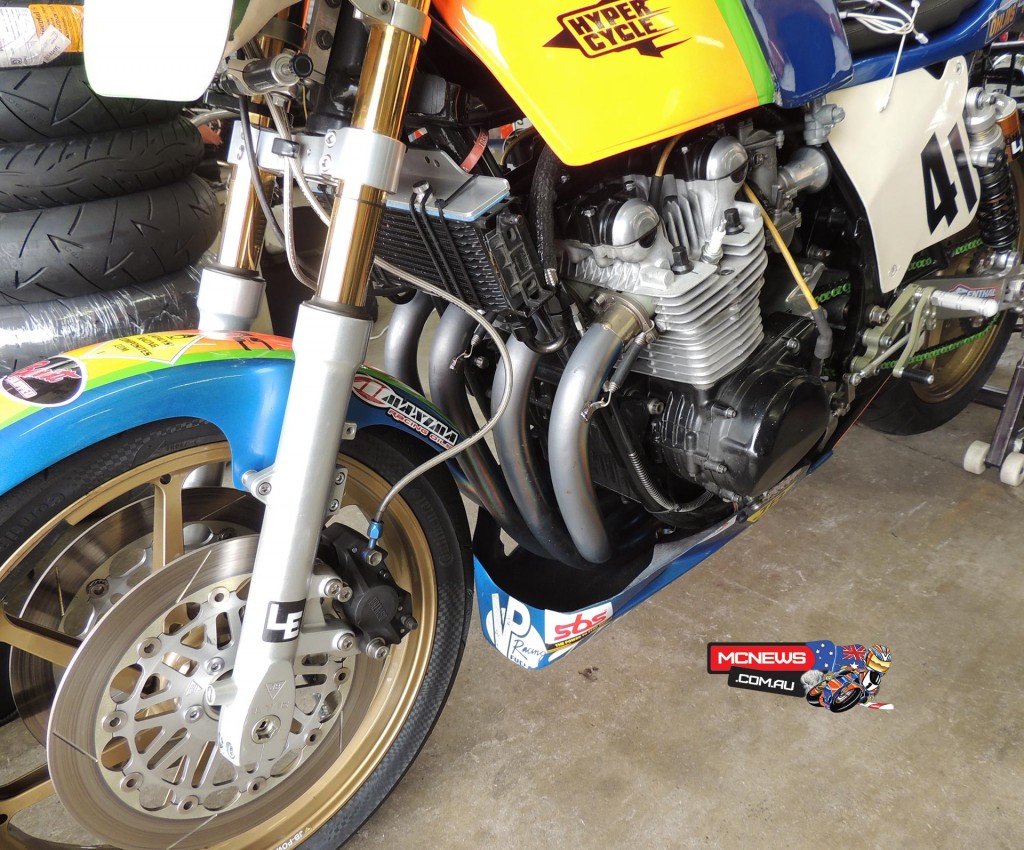

2016 Island Classic
- Roger Winfield Interview
- Jeremy McWilliams Interview
- Jed Metcher Interview
- Mike Meskell Interview
- International Challenge Race Four Report
- International Challenge Race Three Report
- International Challenge Race Two Report
- International Challenge Race One Report
- International Challenge Qualifying Report
- Island Classic 2016 Image Gallery A
- Island Classic 2016 Image Gallery B
Island Classic 2016 – International Challenge Team Points
- Team UK 693
- Team Australia 594
- Team Ireland 421
- Team USA 355
- Team NZ 289
Island Classic 2016 – Ken Wootton Memorial Trophy Individual Points
- Jed Metcher 156
- Jeremy McWilliams 156
- Steve Martin 148
- Conor Cummins 140
- John McGuinness 133
- Ryan Farquhar 132
- Glen Richards 132
- James Hillier 119
- Beau Beaton 118
- Craig Ditchburn 115
- Paul Byrne 102
- Ben Rea 96
- John Allen 89
- John Walsh 85
- Scott Webster 83
2015 Island Classic Highlights
- Jeremy McWilliams scores 2015 Island Classic Pole Position
- Team UK win Island Classic 2015 International Challenge
- Phil Hall’s take on the 2015 Island Classic
- Island Classic 2015 Image Gallery A
- Island Classic 2015 Image Gallery B
- Island Classic 2015 Image Gallery C
- Island Classic 2015 Image Gallery D
- Island Classic 2015 Image Gallery E
- Island Classic 2015 Image Gallery F
- Island Classic 2015 Image Gallery G
- Island Classic 2015 Image Gallery H
- Island Classic 2015 Image Gallery I
- Island Classic 2015 Image Gallery J
- Island Classic 2015 Image Gallery K
- Island Classic 2015 Image Gallery L
- Island Classic 2015 Image Gallery M
- Island Classic 2015 Image Gallery N
- Island Classic 2015 Image Gallery O
- Island Classic 2015 Image Gallery P
- Island Classic 2015 Image Gallery Q
- Island Classic 2015 Image Gallery R
- Island Classic 2015 Image Gallery S























